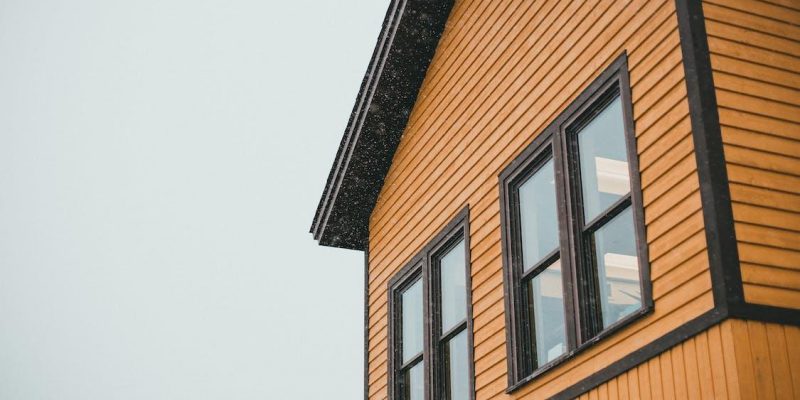Choosing the right exterior for your home enhances its aesthetic appeal and contributes to its protection and structural integrity. One such critical component is siding, which forms the outer protective layer of a home. Well-chosen and correctly installed siding can shield your home from various elements, including wind, rain, and extreme temperatures, prolonging its lifespan and preserving its value.
Given the weather extremes in some parts of the United States, such as fluctuating temperatures and seasonal variations, siding maintains the home’s internal temperature. This protects it from weather-induced wear and tear. Particularly, in cities like Pittsburgh, with its hot summers and snowy winters, siding is crucial to keeping a house’s interior comfortable. Plus, with a wide range of siding materials available, homeowners can ensure their homes reflect their taste and the unique character of their region’s architectural styles.
Installing siding might seem challenging, given its precision and labor. However, proper preparation and the right approach can make it a manageable project.
1. Assess the situation
Before diving headfirst into your siding installation project, it’s critical to assess the current state of your existing siding. Is it showing signs of damage or wear, like peeling, cracking, or discoloration? Perhaps it’s outdated, and you’re looking for a refresh. Either way, your first task is to examine the current situation carefully. Take note of any damages, potential obstacles like pipes or outlets, and the overall surface area you’ll work with.
The assessment also includes signs of weather-related damage as well. For instance, issues like moisture seepage are common if you live in Pittsburgh, a city with a variable climate. These issues can damage the underlying wood structure. If you notice any such problems, they must be addressed before installing the siding.
However, identifying and rectifying these damages can be challenging, particularly if you don’t have experience dealing with siding issues. Therefore, if you are in such a predicament, don’t hesitate to look for Pittsburgh siding experts who can provide a professional assessment and necessary repairs to ensure a solid foundation.
2. Prime the wall surface
Professional siding requires thorough preparation. Start this phase by removing existing siding and meticulously cleansing wall surfaces. You want a spotless, level canvas to welcome the replacement siding. This canvas should be free of dust, debris, or old nails that might interfere with installation.
Once the old siding is removed, it’s time to clean the wall surfaces. Use a power washer, a brush, and soapy water to remove accumulated dirt, grime, and dust. Be sure to pay extra attention to corners and crevices where dirt often resides.
3. Install underlayment and flashing
Before the siding is put up, you must install underlayment and flashing. The underlayment, often made of water-resistant materials like tar paper or house wrap, is a barrier against water infiltration and improves your home’s insulation. This layer should be applied smoothly and securely, ensuring all seams are well-sealed and no areas are left exposed.
Flashing, typically made of thin pieces of impervious material like galvanized steel or aluminum, directs water away from openings and intersections. This includes windows, doors, and changes in siding direction. Proper flashing installation is critical as it prevents water damage and mold growth.
4. Initiate the installation
Having checked off the preparatory tasks, it’s time to roll up your sleeves and dive into the actual siding installation. A tried-and-true strategy is to start at the bottom and ascend upwards. This approach ensures that water drips down and away from the siding, preserving its integrity. Adhere to the manufacturer’s guidelines when attaching your first row of siding, ensuring it is horizontally aligned and snugly fastened yet has sufficient wiggle room to accommodate temperature-induced expansion and contraction.
When securing the siding, the aim isn’t to immobilize it with tightly hammered nails but rather to anchor it in place. Strike a balance when applying force—enough to let the nail head contact the siding but not to the extent that it stifles siding mobility.
5. Assemble the rows
With the first row firmly established, it’s time to move forward. Each adjacent row should slightly overlap its predecessor, forming a watertight seal that prevents water intrusion. Be mindful of staggering the seams between siding pieces to avoid a straight vertical seam line, potentially offering an inlet for water.
Maintain the rhythm of the installation, ensuring each piece is secure and horizontally aligned. This stage demands patience. Hasty actions might lead to mishaps, such as misaligned rows, which can tarnish your siding’s aesthetic appeal and functionality.
6. Finish and trim
As you reach your house’s windows, doors, and roofline, you’ll need to cut your siding to fit these areas. Use your measurements to mark the siding pieces for cutting, ensuring a precise fit around these elements. The goal is to create a neat, seamless look that gives your home a professional finish.
Once the siding installation is complete, trim pieces can be added to give a cohesive, finished appearance to a design. Similarly, they strengthen siding water resistance by sealing potential water entry points.
7. Clean up
Your project may appear complete at this stage, but it’s necessary to pause and perform some final checks. Engage in a thorough inspection of your work. Be looking for loose siding sections, overlooked nails, or spaces where water could infiltrate. Rectify these issues promptly – secure any loose areas and utilize suitable caulking to seal any discovered gaps.
The final stage is post-project cleanup. Responsibly dispose of surplus materials and clear the workspace of debris. Pay particular attention to potential hazards such as sharp objects like nails. Comprehensive cleanup is essential for safety and signifies your project’s successful completion.
Conclusion
Installing siding is a critical task that can significantly enhance your home’s durability and visual appeal. By following this guide, you’ll be well-equipped to take on this project, ensuring your home gets the protection and makeover it deserves.
Remember that meticulous planning, careful material selection, understanding safety guidelines, and the importance of precision during installation all play crucial roles in the success of your siding installation.




















